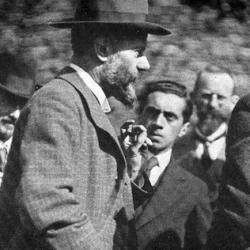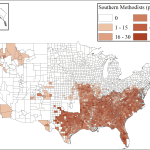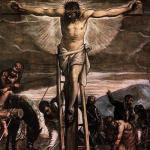One of the virtues of Anthony J. Carroll’s Protestant Modernity is his effort to put flesh on the bony term “secularization,” often batted about in an airily sociological fashion. On-the-ground secularization is easiest to spot in Revolutionary France, when institutions and personnel and property and records were removed from the church’s jurisdiction and resettled into the jurisdiction of the state.
For instance, by Article X of the Declaration of the Rights of Man and the Citizen (1789), “The French Revolution ended both a tradition of identifying the State with a particular religion and the historic link between Catholicism and political society in France. Article X stressed that no citizen should be harassed for the opinions that they held, even for their religious opinions. Thus, religious opinions were placed on a par with all personal choices and would no longer be a sine qua non for the civil and political rights associated with citizenship” (3). Protestants and Jews became French citizens. This was a a very partial secularization, as the anniversary of the Bastille was celebrated with a Mass conducted by 300 priests (4).
A thicker line was drawn between church and society a few year later with the establishment of the civil registry: “This replaced the cataloguing of social life that had previously been carried out by the clergy. Birth, marriage, and death were no longer to be recorded in an ecclesiastical framework but, rather, in a purely civil one. Thus, birth would no longer be recorded by the certificate of baptism but, rather, by entering one’s name and birthplace on the civil registry, which was kept at the town hall. This changed a tradition that had been in place for centuries and removed the ecclesiastical control of the recognition of individual and social identity. Marriage would not also become a civil affair, recorded in a civil registry that paid no attention to the religious denomination of the couple” (4–5).
The abolition of religious orders represented a more intrusive act of secularization: “In February 1790, the Constituent Assembly declared that the vows of religion were invalid and banned them from being taken in the future. Monastic orders were ordered to disperse, and priestly celibacy was abolished.” Monks were secularized, removed from their religious lives and forced into other modes of living. And it was an act of state: “In this direct interference in the life of the religious orders, the State showed that it had power to determine the forms that religion could take in its territory. This was an assertion of the supremacy of secular jurisdiction over ecclesiastical jurisdiction and thus further underlined the elimination of the religious dimension from the fabric of social life” (5).
That last point is critical: “Secularization” often names an impersonal undirected social force, a corrosive of religious life. Carroll indicates that in France at least the process was directed by the State for the benefit of the state.
The irony of Carroll’s account is that Weber, whose theory of secularization is the focus of Carroll’s study, worked out his theory within the framework of Protestant theology. Weber’s opposition of inner-worldly asceticism and world-denying mysticism gave theoretical gloss to the old Protestant axiom about Mary and Martha (258). Weber’s debt to theology wasn’t indirect. Among sociologists of his time, he was, Carroll estimates, the best-read in theology: “in the construction of [his] theory of secularisation he used the Protestant sources of his day, and it is there which shaped his arguments. This is the case in his differentiation of Lutheranism and Calvinism, in which he relies heavily on Matthias Schneckenburger’s work, in his reliance on Julius Wellhausen’s research on the prophets in ancient Judaism, which he uses to speak of the type of person fit for a vocation in politics and scientific research, and in his conception of charisma, which was influenced by Rudolf Sohm.” In sum, “Protestant theological influences” shaped “his conceptual formulation” and “situate Weber’s theory of secularisation within a Protestant architecture” (259).
Weber, in short, claimed to construct a scientific theory of secularization while relying on theological resources that are putatively excluded from the realm of science.















